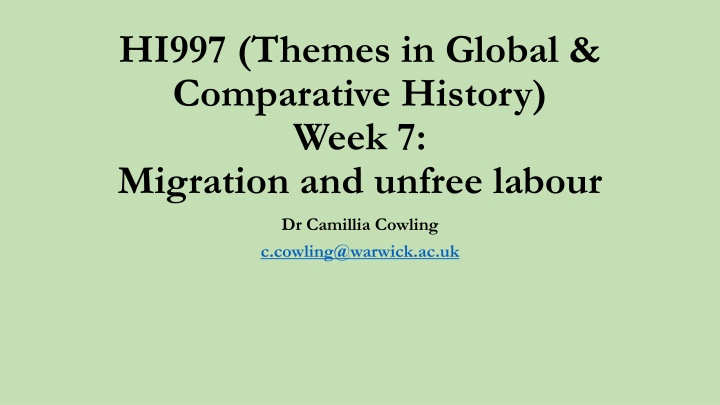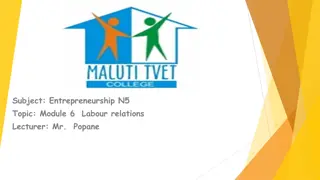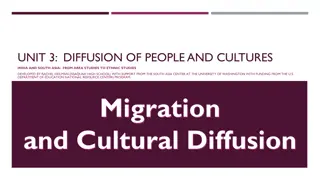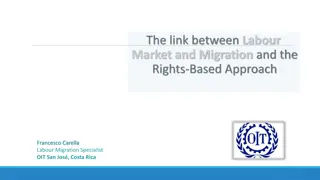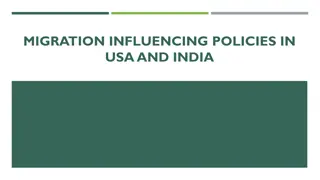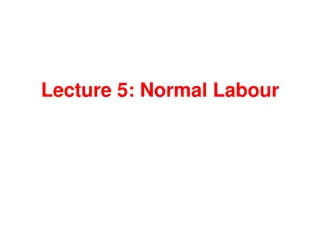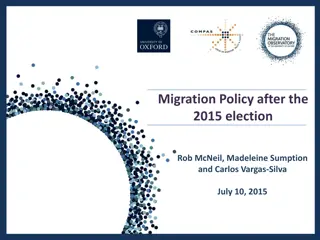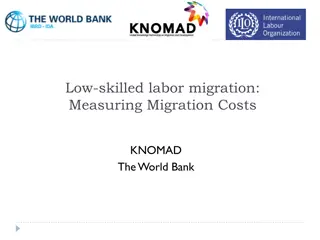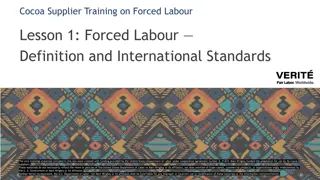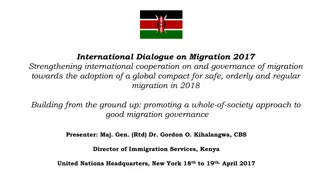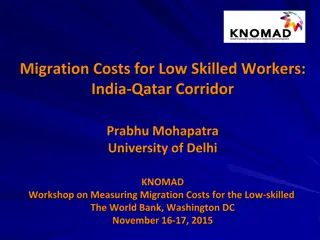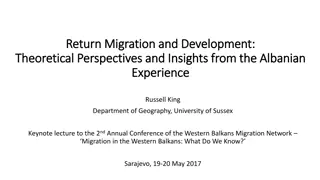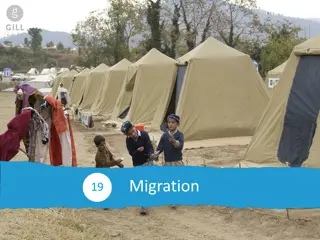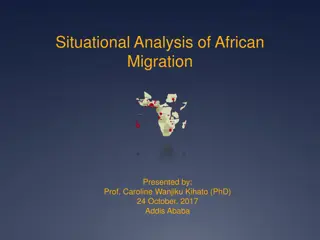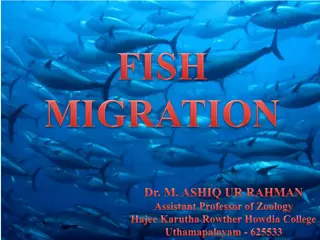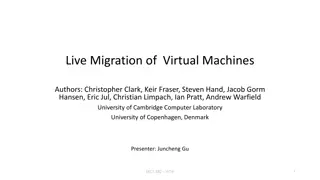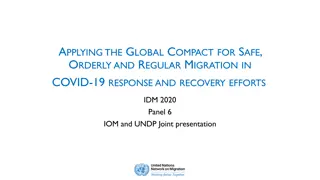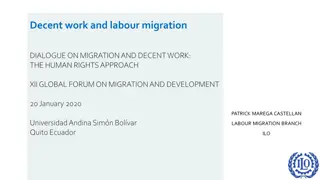Migration and Unfree Labour in Global History
Explore the impact and dynamics of migration and unfree labor in global history, focusing on the transatlantic slave trade, human movement beyond numbers, and the transition from slaves to enslaved people. Delve into readings on coerced migrations, racial capitalism, and social reproduction, while analyzing the Atlantic slave trade in numbers and alternative approaches to studying human movement and spaces.
Download Presentation

Please find below an Image/Link to download the presentation.
The content on the website is provided AS IS for your information and personal use only. It may not be sold, licensed, or shared on other websites without obtaining consent from the author.If you encounter any issues during the download, it is possible that the publisher has removed the file from their server.
You are allowed to download the files provided on this website for personal or commercial use, subject to the condition that they are used lawfully. All files are the property of their respective owners.
The content on the website is provided AS IS for your information and personal use only. It may not be sold, licensed, or shared on other websites without obtaining consent from the author.
E N D
Presentation Transcript
HI997 (Themes in Global & Comparative History) Week 7: Migration and unfree labour Dr Camillia Cowling c.cowling@warwick.ac.uk
Readings/ sources Eltis, David. Free and Coerced Migrations: the Atlantic in Global Perspective, European Review, 12 (2004): 313-28. Diana Paton, Gender History, Global History, and Atlantic Slavery: On Racial Capitalism and Social Reproduction. American Historical Review (2022) Emma Christopher, Cassandra Pybus, and Marcus Rediker, eds. Many Middle Passages: Forced Migration and the Making of the Modern World (e-book at Library). University of California Press, 2007 (introduction) Madhavi Kale, Fragments of Empire: Capital, Slavery, and Indentured Labour in the British Caribbean (1998) (introduction and chapter 1) www.slavevoyages.org
Initial questions: the transatlantic slave trade How much have you previously studied this topic? Which areas of the Atlantic World were mainly involved? What directions did the trade take over time? Who was trafficked? When did the trade end?
The Atlantic slave trade in numbers (1500- 1900) 12.52M Africans embarked across Atlantic over whole period of slave trading (10.7M arrived) Brazil and the Caribbean as a whole together received 80% of all slaves traded to Americas The US received only 4% Brazil and Cuba were responsible for most of the trade after 1807: over 2M to Brazil in the C19; over 700,000 to Cuba
Beyond the numbers: other approaches to the study of human movement Atlantic world and African Diaspora as formed by links of culture, memory as well as by commodities production Insights of the spatial turn in the humanities: analyse spaces and places as well as time Space: a physical pre-existing entity Place: social, a product of human interactions & power dynamics and by a FLOW of people through spaces over time
Slaves or enslaved? Many historians today use enslaved people not slaves some/ all of the time Recognises that no-one is born a slave; slaves are made A political position, but so is slave From 1820/ 1826, trade is ILLEGAL. Most people living as slaves in main trading areas of Americas after this (Brazil/ Cuba) are ILLEGALLY enslaved. Some scholars use enslaved when discussing personhood and subjecthood and slave when discussing slaveholders perspective
Race or race? Biologically speaking, race does not exist. Many historians therefore choose to put race in quotation marks in their writing. However, race has a very significant history as a SOCIAL CONSTRUCT. consider race as a PROCESS: HOW ideas about race are CONSTRUCTED & vary across time & place: race-making See PBS website: Race: The Power of an Illusion
Questions What approach does each author/ source take towards the study of coerced migration? How effective do you think it is? What are its limitations? What were the racializing and gendered effects of trafficking? Is it possible to tell personal/ human histories of forced labour migration? Does the history of the Atlantic trade look different if viewed through a global history lens? What contributions can scholars of the Atlantic Middle Passage offer to those working on forced migration at other places or times? Did these readings change the way you thought about other big themes on this course violence? Environmental history? Imperial history? Labour?
